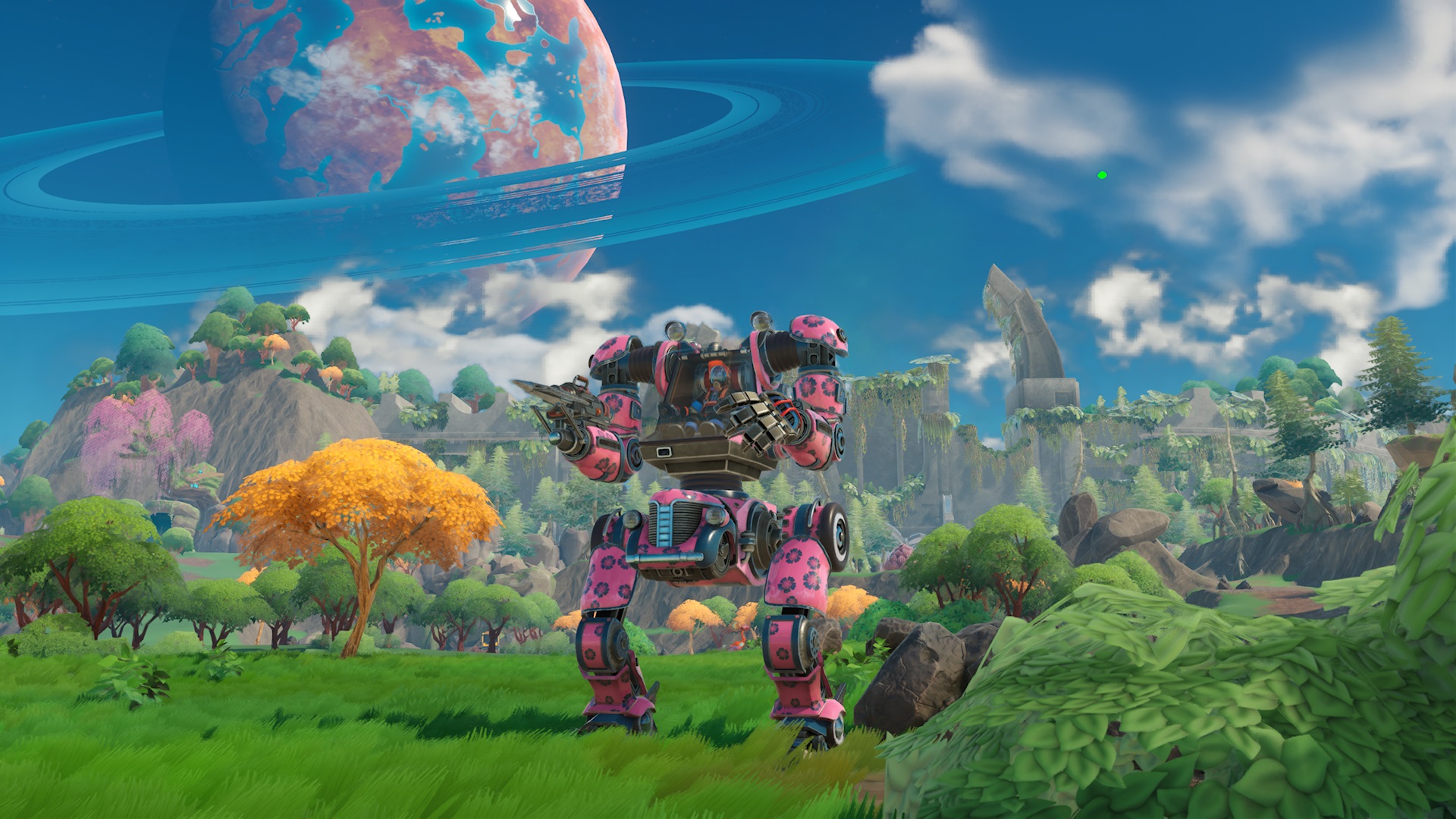
I've played a lot of farming sims in my time, but I've never tended to alien crops and gathered resources behind the windshield of a mech. Thanks to Lightyear Frontier, I'm doing exactly that, and from the get-go, it proves to be one of the more novel and downright fun ways to farm. With a handful of different tools that can be attached to my right arm, I use a Vacuum Harvester to suck up all the fully grown plants in my plots of land. Then, I switch it up to my trusty Seed Shooter - which as the name implies - lets me fire out seeds in the now vacant sections of soil. Coupled with an Irrigation Hose that acts as the mech's equivalent of a watering can, a Spike Saw that can break down trees, rocks, and minerals, and a Sprout Canon that can be used to plant saplings, the tools and design of the mech make everything feel far less laborious.
Release date: March 19, 2024 (Early Access)
Platform(s): PC, Xbox Series X/S
Developer: Frame Break
Publisher: Amplifier Studios
The enjoyment of farming is also helped by the fact that Frame Break's adventure sees you land and try to make a home for yourself on such an inviting, peaceful planet with no combat or threatening presences. It's the kind of place you want to get lost in; with verdant fields, vibrant trees and plants, unusual wildlife, and starry skies decorated with a few neighboring planets. There's plenty to discover and do in this alien world, which you can explore solo or with three friends quite comfortably. The Early Access build already shows heaps of potential, but it is in need of a little refinement. Some absent smaller features came to mind during my time in the mech that could make the experience more streamlined, and with a touch more guidance in-game, Lightyear Frontier would really shine.
Restoration
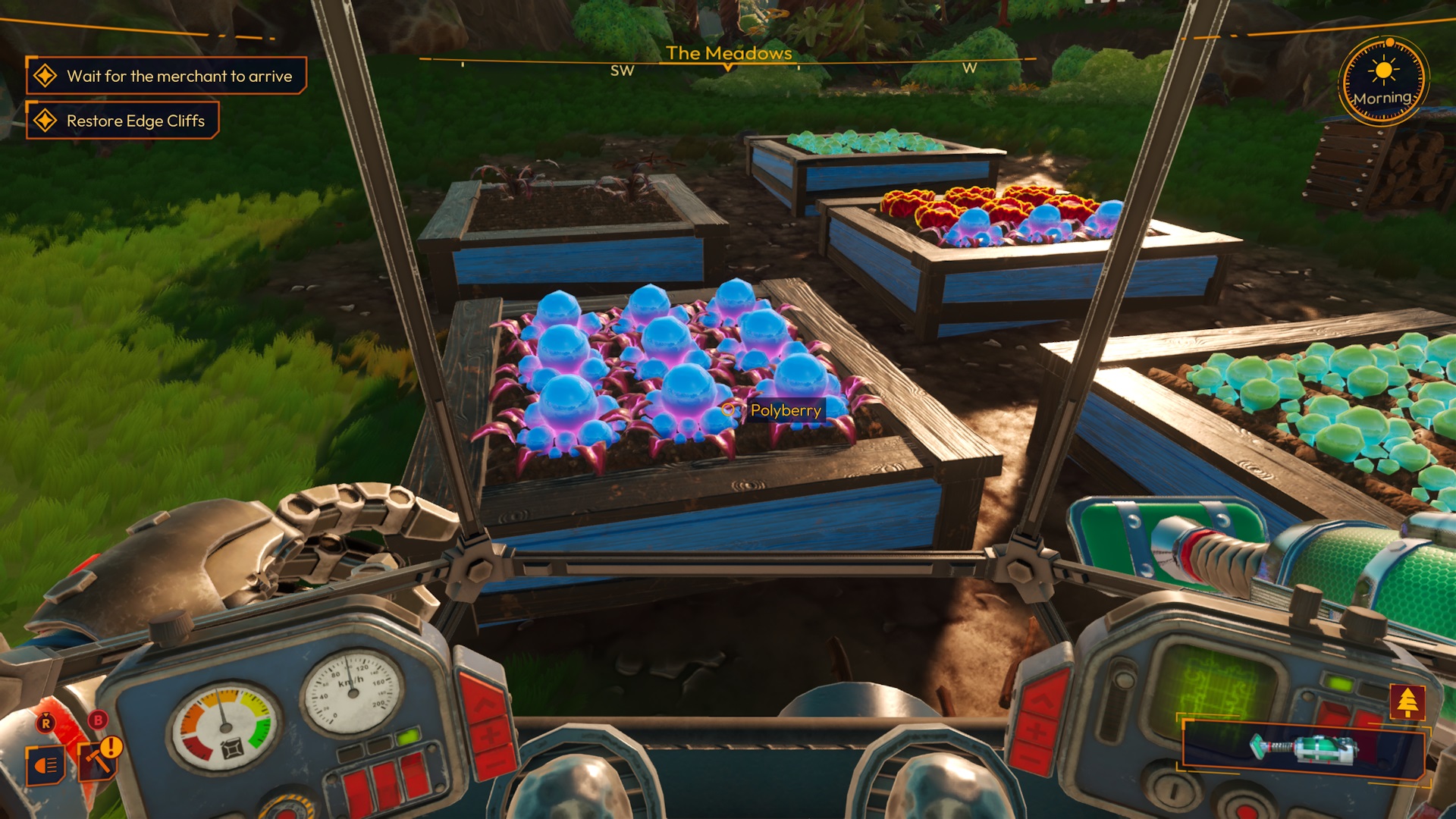
After a bit of a rocky landing, the beginning of Lightyear Frontier sees you put your mech back together by reattaching its arm and front engine with your pickaxe tool - which can levitate and move objects outside of your mech. After flipping it upright, you can then get inside and set out to collect your tools which have been scattered around the landscape. Each tool is marked by a yellow flare of smoke that can be seen from a distance, and after a bit of scouting, I had every tool available to me, which can be swapped out from a dial wheel menu. From this point on, you'll get a variety of tutorial objectives to complete, from building a basic homestead which comes in the form of a tent, to creating a plot of land to plant your first seeds.
While these initial objectives set up the basics quite well, the guidance early on could be a little clearer. It wasn't immediately obvious to me for quite some time, for example, that you have another tool you can switch to when you're outside of the mech that lets you paint objects. For the most part, it's all quite straightforward to get to grips with, but there were occasions when I’d have appreciated some more explanation.
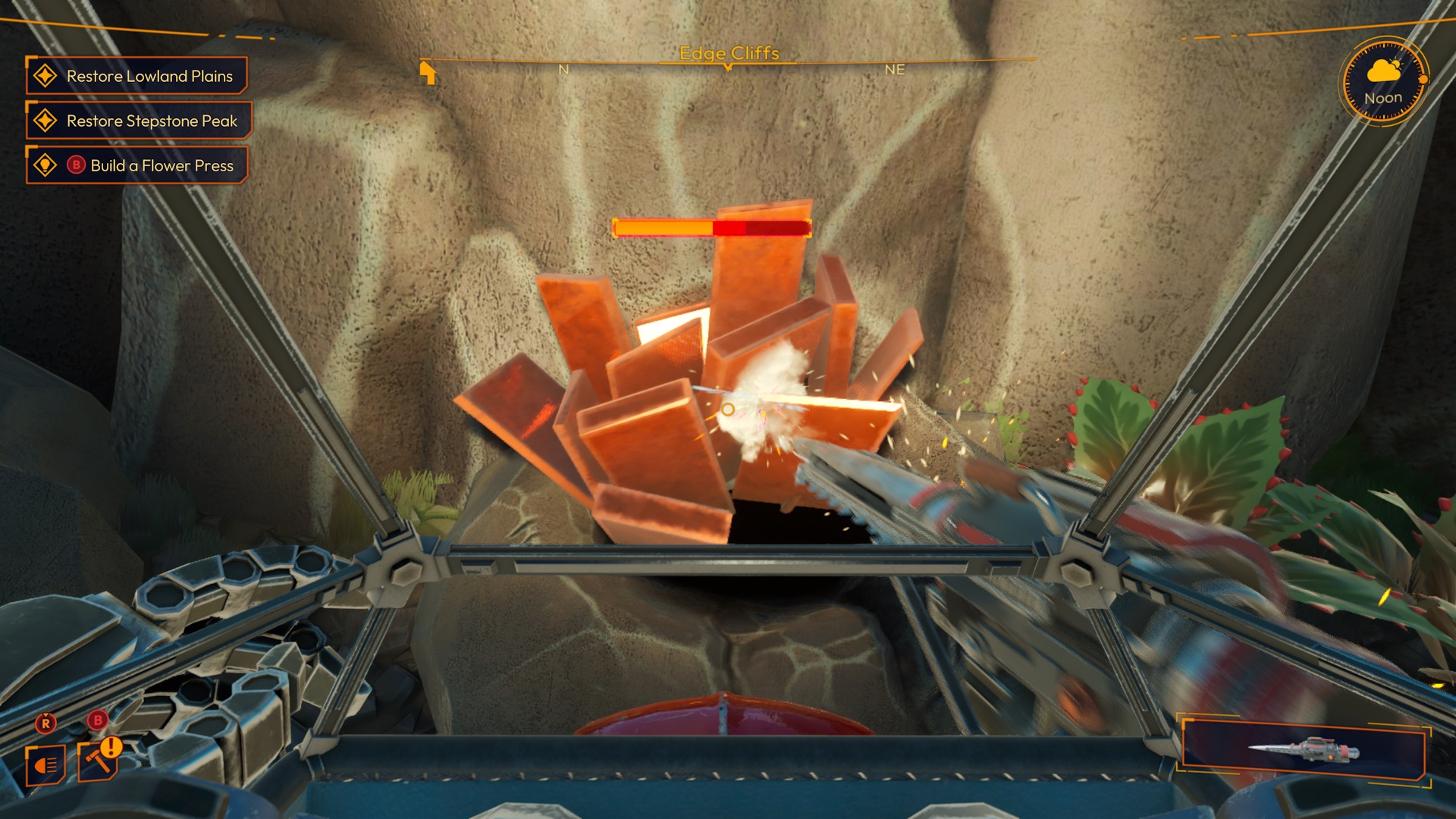
There are multiple forms of progression in Lightyear Frontier that I really enjoyed. The first ties to resources: as you gather minerals and wood and grow new plants in the world by finding seeds, you'll unlock more blueprints for various constructs. This will range from decorative items you can make to increase the coziness level of your homestead, to different crafting stations that let you create new items that you'll need to build more advanced blueprints.
Your mech also has various upgrades available, which you'll need to work towards to get your hands on more resources in the world - not unlike Stardew Valley, you have to improve your tools to break down stronger minerals or bigger trees. I can see how Lightyear Frontier is trying to encourage discovery, but I did run into some issues because the game doesn't tell you, or provide hints, as to what you need to do to unlock certain recipes or resources - I would often being able to see resources I needed before I was able to actually make them, which did sometimes cause confusion.
The map itself is also broken up into different areas that need to be discovered and then restored by cleaning up noxious weeds or slime contaminating the ground. This again ties to your mech upgrades, since you'll need to improve certain tools to get rid of stronger noxious substances. The more you restore, the more you have access to. Overall, there's a satisfying sense of progression that feels rewarding and keeps me invested. It's always exciting to see the places I've restored thanks to the work I put into my mech upgrades, and in turn, unlocking more blueprints by discovering what resources new areas have.
Teamwork
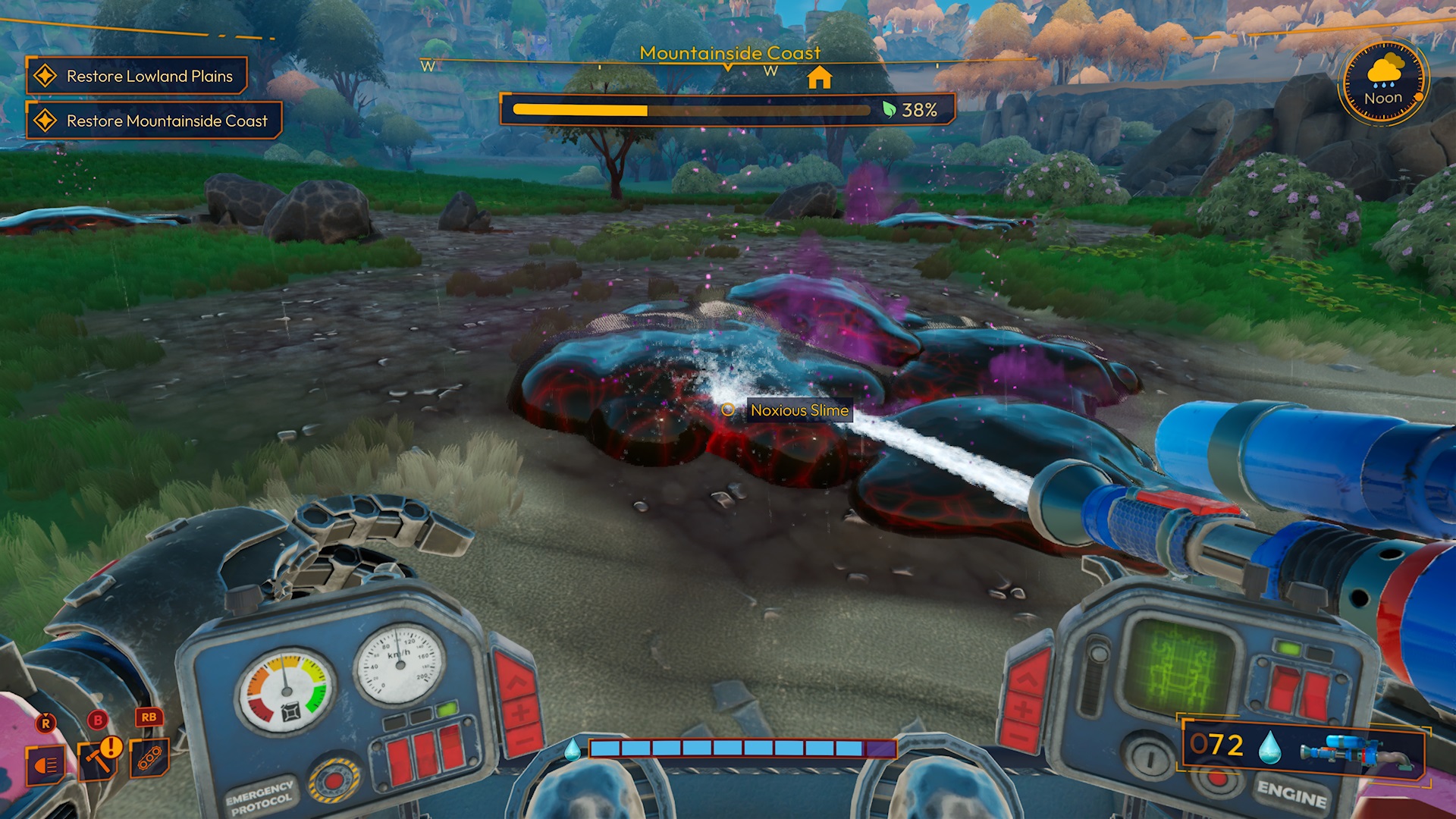
The main sticking point I had early on in Lightyear Frontier is how quickly I got over-encumbered. Especially when playing solo, a lot of the upgrades, constructs, and decorations are going to require you to do a lot of resource gathering, and the space your mech has is pretty limited to begin with. Thankfully, you can build storage spaces to lighten the load, and one of the mech upgrades will allow you to carry more, but it takes some time to get. This means that I was often running back and forth to deposit my bounty more than anything else to start off with. On the plus side, since you're in a mech, you don't ever have to worry about stamina, which is a common hindrance in farming adventures.
When it comes to building in the world, it’s happily a breeze to set down your homestead and the various crafting stations thanks to its snap system that automatically adjusts an object's position when it’s nearby something else. The only downside is that there doesn’t seem to be a way to alter or tweak the position of something once it’s placed down. If I wanted to, say, move a decoration, I’d have to recycle and rebuild it. Hopefully, this is a feature that will come later down the line.
Playing in co-op certainly makes quick work of the earlier stages of the game, since you can band together to collect resources to go towards constructs. While I didn't get the chance to try out crossplay on Xbox and PC during my time with the game, I did test out co-op on Steam. You each get a mech and have to gather your own tools, but then you can work together to build up your homesteads. While it works quite well and it's easy enough to host a world for other players to join, there isn't much currently in the way of in-built features for communication.
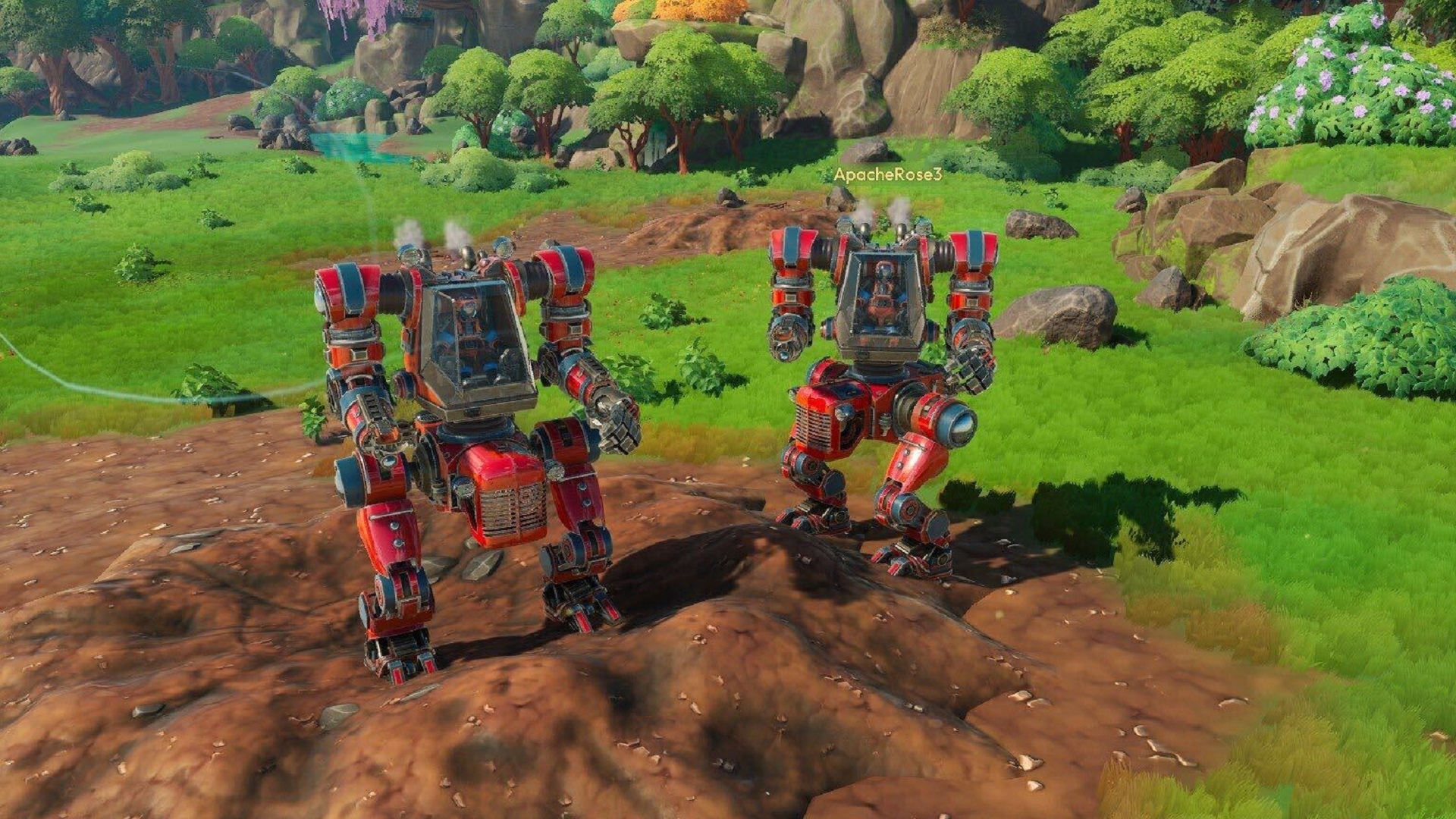
On the world map, the markers are also very limited in general. You'll only see the location of where you've built your homestead, along with the option to place down one other single tag. Even when playing solo, having more tags to place down on the map would make it so much easier to mark notable locations to come back to. And with so much resource gathering to do, it would be handy to have additional markers you could leave on the map to remind you where you found a good batch of copper, or coal, for example.
In spite of some features I would love to see, I've really enjoyed my time with Lightyear Frontier's Early Access. As a longtime fan of farming games, the mech offers a novel, refreshing approach to the farming sim genre. The satisfying sense of progression and peaceful world also kept me coming back, and my plan of doing just one more in-game day often turned into multiple as I got lost in my pursuit of advancing. The Early Access launch has so much going for it already, and I'm looking forward to seeing how Lightyear Frontier grows in the future.







